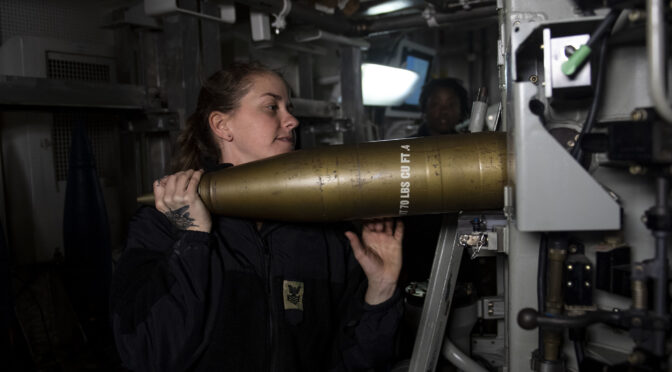By Artem Sherbinin and Daniel Stefanus
The Core Issue
The U.S. Navy’s human resources (HR) policies are failing, and not because the policies themselves are ineffective, but because of their poor digital implementation. Our 21st century workforce – mostly Gen-Z and Millennial Sailors – expects a fast, accessible, and intuitive HR software experience. Instead, they are left feeling unsupported while wasting millions of workhours annually in the battle against websites, performance evaluation tools, and knowledge management software from the 1990s. Consistent errors in their HR experience, often driven by these unreliable digital HR tools, push many Sailors out of the service. Sailors’ digital HR experience is not a quality of service or quality of life issue. Getting HR digital implementation right is a warfighting and readiness imperative.
Telltale signs of the Navy’s HR woes abound. The Navy has not met its officer recruitment or retention targets for the past two fiscal years, and enlisted end strength has been sustained only by extravagant bonuses and waiving requirements that are otherwise part of maintaining a capable military workforce such as test score minimums, high-year tenure restrictions, and PRT scores. These trends must be placed within the broader context of a population that largely cannot serve or is uninterested in serving. However, ensuring that Sailors have the digital HR tools necessary to successfully navigate and manage their careers will yield more satisfied, high-performing warfighters, driving the higher retention and recruitment we need to offset our macro headwinds.
See the World Through Gen Z Sailors’ Eyes
The suite of HR products Sailors use today are largely unchanged since the late 1990s. From the Netscape-era BUPERS Online to the hyperlink carnival that is the My Navy Portal, the user interface/user experience (UI/UX) of the majority of Sailors’ HR systems look like retro throwbacks to a generation raised on smartphones. Antiquated UI/UXs are complimented by fragile backend systems that cannot be trusted for needs as fundamental as on-time pay, permanent change of station moves, and assignments without manual intervention and offline Microsoft Excel files.

Fundamentally, Sailors do not want to work in an environment where it takes an hour to log in to a computer or monthly paychecks that do not arrive on time, a basic function of any organization. Most worrying is the overall trend: these issues have been discussed for nearly a decade without significant improvements to Sailors’ ability to self-resolve their HR needs, especially at sea in low-bandwidth environments.
How We Got Here
For context, in 2015 then-Chief of Naval Personnel Admiral Bill Moran launched a series of initiatives to modernize the Navy’s platforms, policies, and procedures that would become the “MyNavyHR Transformation.” In 2023, it is apparent that due to a confluence of challenges like COVID-19, intra-Navy and inter-branch IT bureaucratic gridlock, and underperforming contractors, the $1.6B transformation has failed to accomplish its objectives. This is despite mighty efforts by successive Chiefs of Naval Personnel.
The root cause of this can be traced to four key issues: the underutilization of civilian and uniformed digital talent, a lack of technical understanding and program management skills – largely at the O-6 level (knowing how to lead does not necessarily mean you can lead digital transformation), an archaic and conservative data regime, and above all else – a failure to understand end-user (Sailor) needs due to a lack of effective user feedback. Combined, these issues ran the MyNavyHR Transformation aground before it left the slip.
Charting a New Course
The CNPs of our era – Admirals Moran, Burke, Nowell, and Cheeseman – have pushed Navy HR on all fronts to transform for our Sailors. But the problem is bigger than one DCNO and their team. Delivering the modern digital HR tools Sailors need will require significant course corrections to understand our past and steer towards our future. The Navy should first execute a top-to-bottom hot wash on what has been learned from these transformation efforts and what the Navy has not been able to overcome in fielding these tools at scale. From there, it can identify ways to better leverage and “make secure” commercial HR tools, secure additional HR IT investment in future budget cycles, have clear Get Real Get Better metrics to solve the issues stymying progress, and establish a consistent, honest feedback loop with the waterfront. If the Navy’s people are its biggest advantage over China’s military, it must prioritize empowering the HR tools that enable their careers.
Artem Sherbinin is an active-duty Surface Warfare Officer currently leading TASK FORCE HOPPER – U.S. Naval Surface Forces’ digital transformation team. He previously deployed three times to the Western Pacific onboard cruisers and destroyers. He is a graduate of the U.S. Naval Academy and holds an M.A. from Georgetown University.
Daniel Stefanus is a Surface Warfare Officer reservist who worked for the Chief of Naval Personnel from 2018-2020 following three deployments to Europe, Asia, and the Middle East. He currently works in corporate strategy and holds an MBA from Harvard Business School, an M.A. from the Naval War College, and a B.S. from Duke University. He was the President of CIMSEC from 2019 to 2020.
Featured Image: PACIFIC OCEAN (April 3, 2020) U.S. Navy Gunner’s Mate 1st Class Courtney Mauldin, from Tallahassee, Fla., loads a dummy round into a Mk 45 5-in. gun aboard the Arleigh Burke-class guided-missile destroyer USS Rafael Peralta (DDG 115) (U.S. Navy Photo by Mass Communications Specialist 2nd Class Jason Isaacs)


Terrific comment! Certainly hope our new CNO moves Navy’s serious people issues (recruiting, training, manning) and the HR process and system modernization needed to properly support our Sailors to the top of her personal action list.
Without the right number of properly trained and equipped Sailors, our most capable ships, subs and aircraft are just so much high-priced junk.
I greatly appreciate articles like this that get into the guts of problems often discussed at a high level. People will just bypass anyone or anything that is difficult to work with as the market provides options. We can’t get to nice things like more ships when we don’t have the organization in order to start.
i think the issue also is not supporting the Sailors with their current goals. Don’t let it be just a check in the box for leadership, take ownership and pride in their professional development and truly help them in their time of need